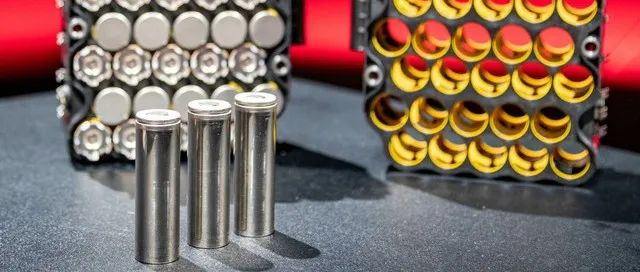Author: Zhu Yulong
After the recent acceptance of the new Neue Klasse electric vehicle platform by BMW, the company revealed that it will use a new cylindrical battery on the Neue Klasse platform. Compared with the pouch battery, the new cylindrical battery can reduce the battery cost by 30% and has a higher energy density than Tesla’s current battery (from the specifications, this might be caused by a 10mm height difference). We can think about the current selection of power batteries from the current planning and discussions.
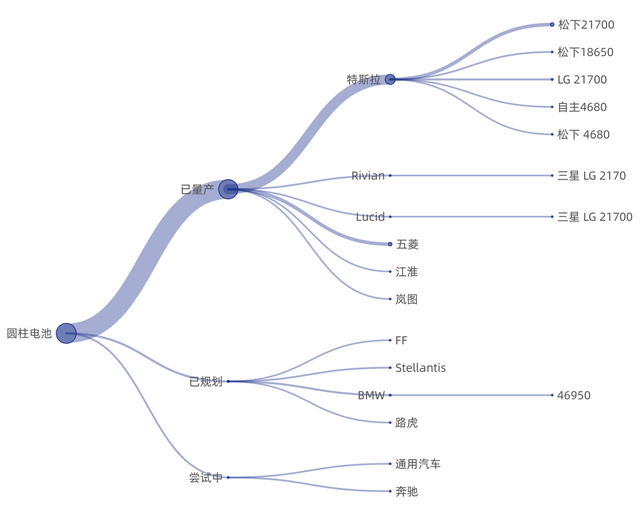
BMW’s Choice
In the choice of traditional companies, it mainly revolves around pouch and cylindrical batteries. Currently, the two factions’ main positions are as follows:
- Pouch: Volkswagen Group (MQB, MEB, and standard battery), Volvo (Gen3 mainstream), Stellantis (European electric vehicles), Mercedes-Benz, BMW (before Gen5), Toyota, Honda
- Cylindrical: General Motors, Ford, Volkswagen Group (before MEB), Volvo (before Gen2), Stellantis, Renault, Nissan, Hyundai-Kia
It is very interesting to see from the above choices that more considerations are still given to the perspective of module and battery pack design. This time, the protagonist is BMW, and the goal is to develop around the next generation of pure electric platform. The name of the “Neue Klasse” platform comes from the 1960s Neue Klasse, which marked the beginning of a fundamental change in BMW’s production direction. BMW also wants to change its development path through this good start. The main models are based on mid-size cars, and the next generation BMW 3 Series and BMW X3 (BMW NK1 and BMW G45) may be the first Neue Klasse platform models, with two versions of Low and High for the new platform.
The goal for 2025 is actually fundamentally different from the pile of pure electric cars that BMW had before. It is a decision made after careful consideration of Tesla’s competitive advantages, focusing on lower costs.
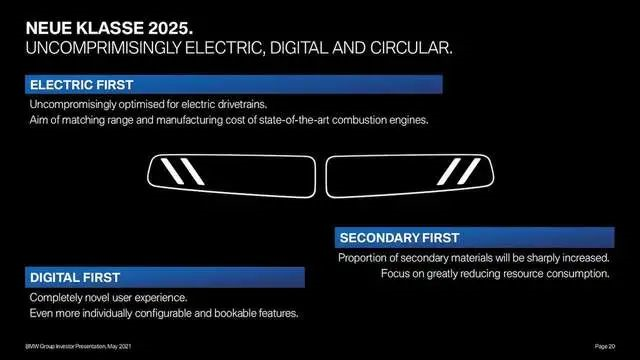
The platform mainly uses the Gen6 electrified powertrain architecture, and the entire platform has only one pure electric architecture. The driving configuration is rear-wheel drive (eRWD) and four-wheel drive (eAWD), with a rear motor and a front motor. According to the efficiency description disclosed, it should be built around SiC technology, and even introduced GaN in low-power charging.The design of the battery may be mainly 800V, and it needs to be designed for even higher fast charging speeds (currently at 200 kW). The 6th generation battery consists of batteries with higher energy density. The plan is to significantly reduce the use of battery materials by switching to new battery technology, with a target cost reduction of 30% compared to previous models.
Note: First, use recycled materials and second, reduce the use of cobalt.
Meanwhile, BMW’s All-Solid-State-Battery (ASSB) technology is scheduled to be commercialized in 10 years. After the release of this cylindrical battery, a concept car with ASSB technology for electric vehicles will be launched. It shows that BMW is very serious about this.
This will trigger a chain reaction in Europe. We see that Mercedes-Benz is also trying to use cylindrical battery to make a high-power version for its AMG sports platform, as well as parallel experiments in battery design. Whether or not to adopt cylindrical technology will depend on the progress of both companies. However, the biggest temptation of this development direction is cost, which makes this path worth careful evaluation for BMW and Tesla, as both companies are using this kind of battery to produce cheaper batteries.
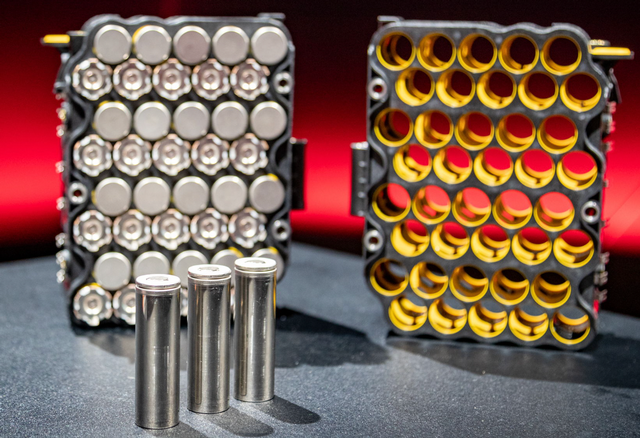
Considerations and Developments of Other Car Companies
Stellantis is currently evaluating a low-cost standard cylindrical battery that can be used in all car brands, from Fiat to Peugeot, covering the two different small and medium platforms shown in the figure below. From a path and time perspective, this time point starts in 2026 and focuses on STLA Small – which is the inevitable choice after the cost is difficult to control in the later large and medium-sized platforms.
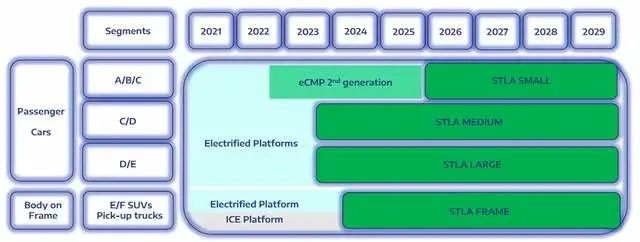
GM’s consideration may still be related to the package because it needs to have a short design that will be used in a series of muscle cars in the future, and consideration must be given to fast charging, especially the 800V design, which currently presents implementation challenges.
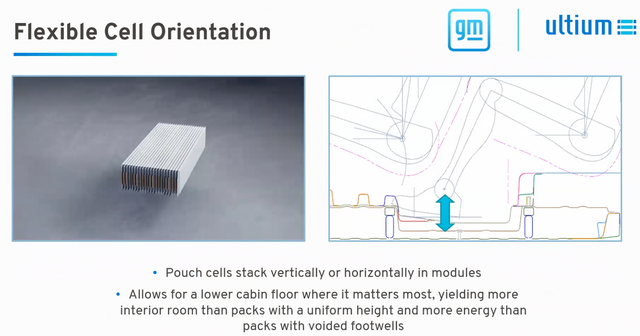
In the next step, Rivian may use even larger cylindrical lithium iron phosphate batteries. Its system design focuses on high energy density and is a very special existence.Summary:
The selection of large cylinders is actually quite fast as the enterprise gradually becomes fixed. According to feedback from suppliers, the pull effect of Tesla can rekindle the vitality of this technology and stimulate industry-wide discussions and evaluations in 2022.
This article is a translation by ChatGPT of a Chinese report from 42HOW. If you have any questions about it, please email bd@42how.com.
